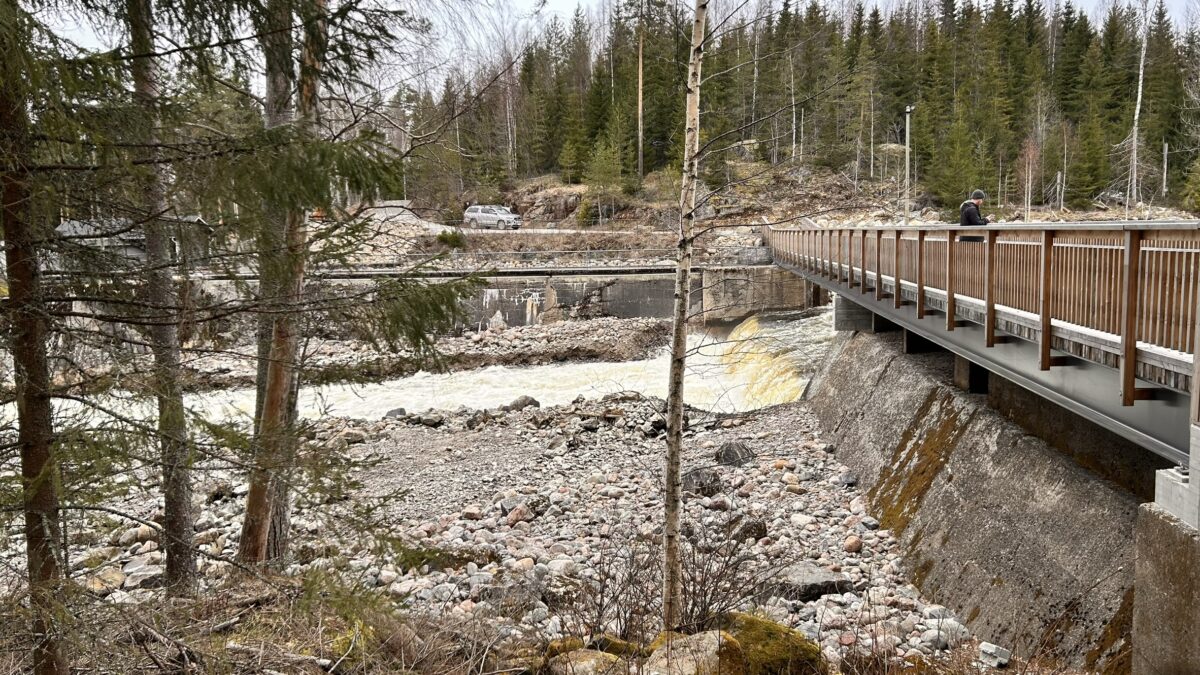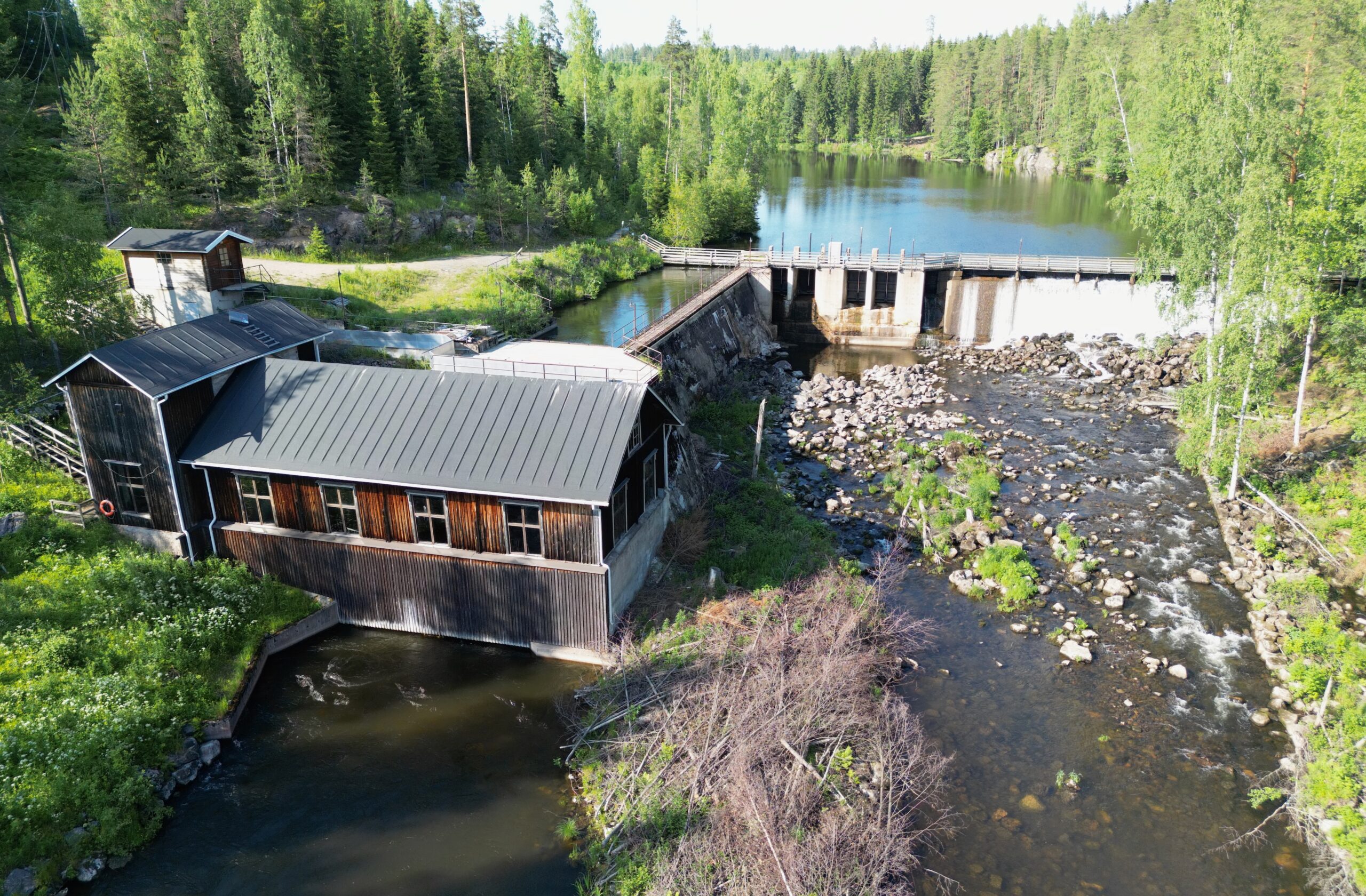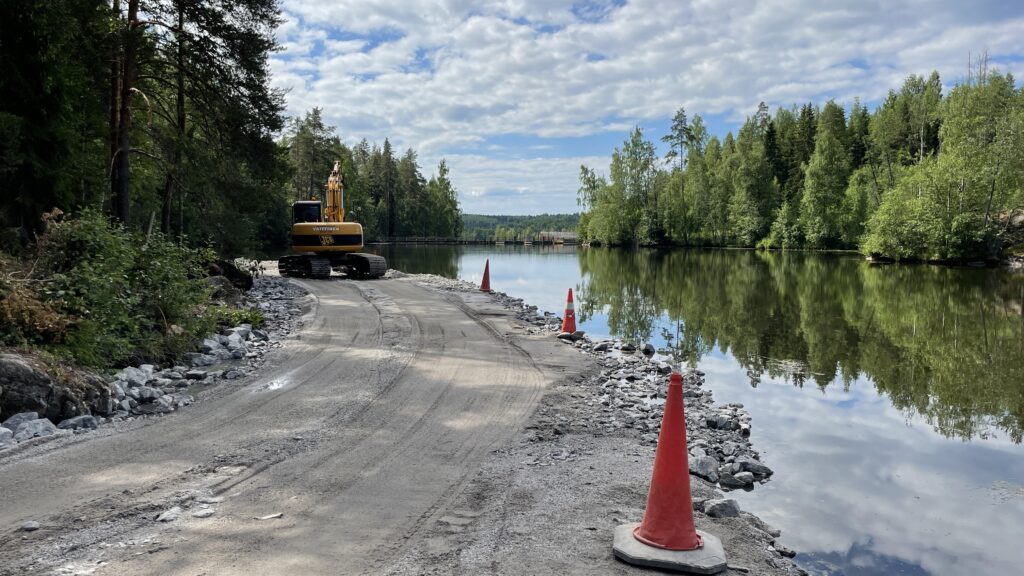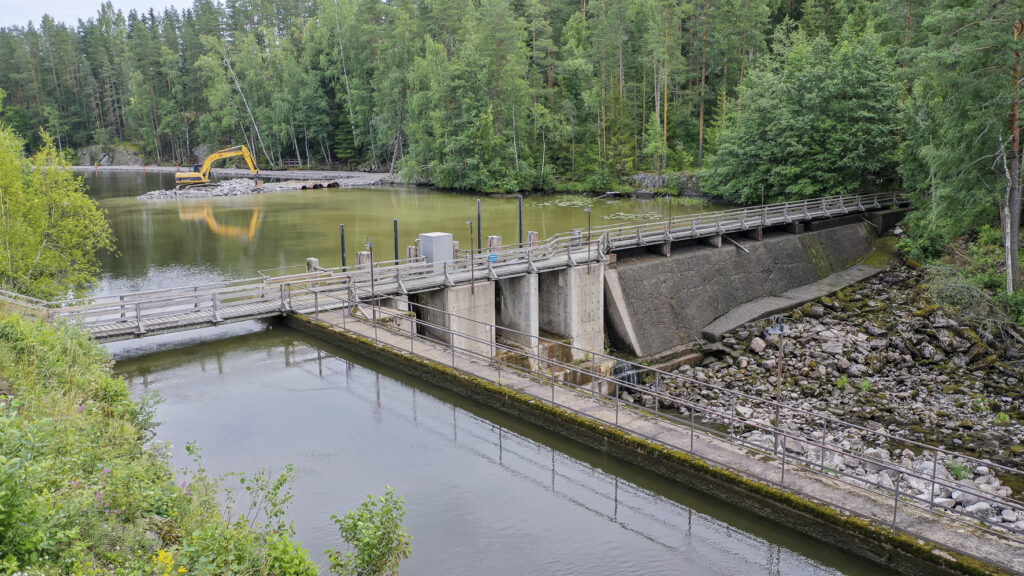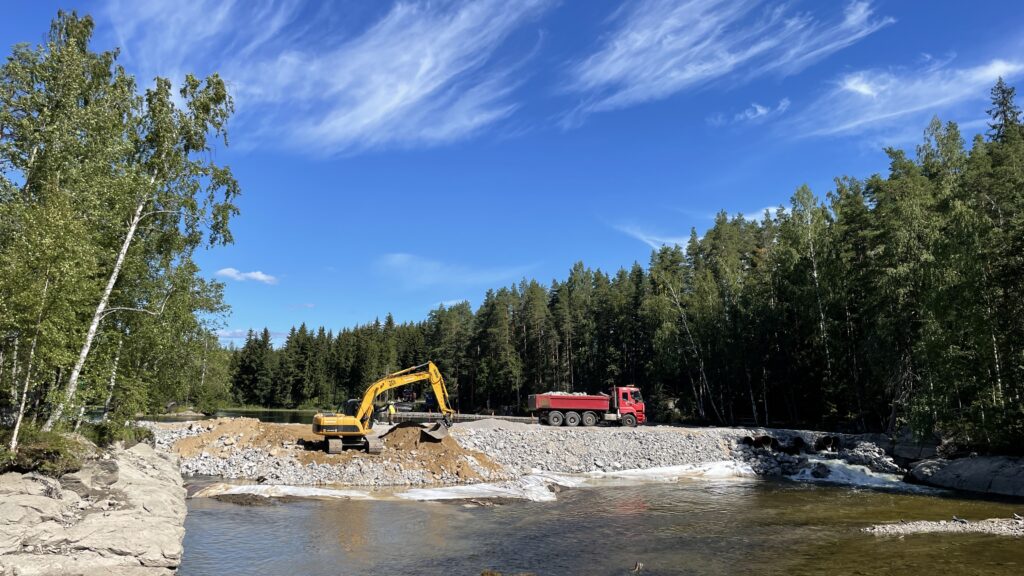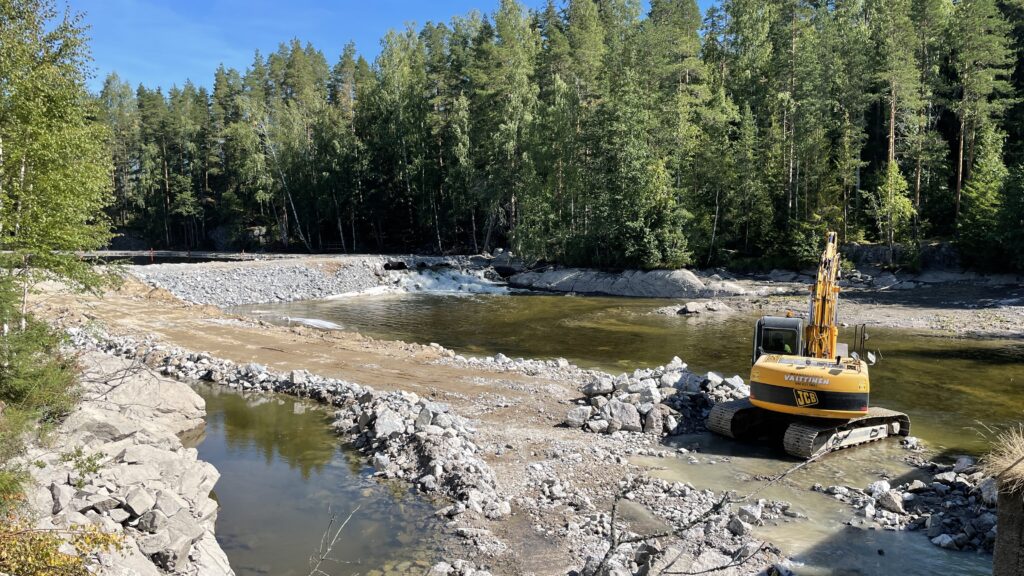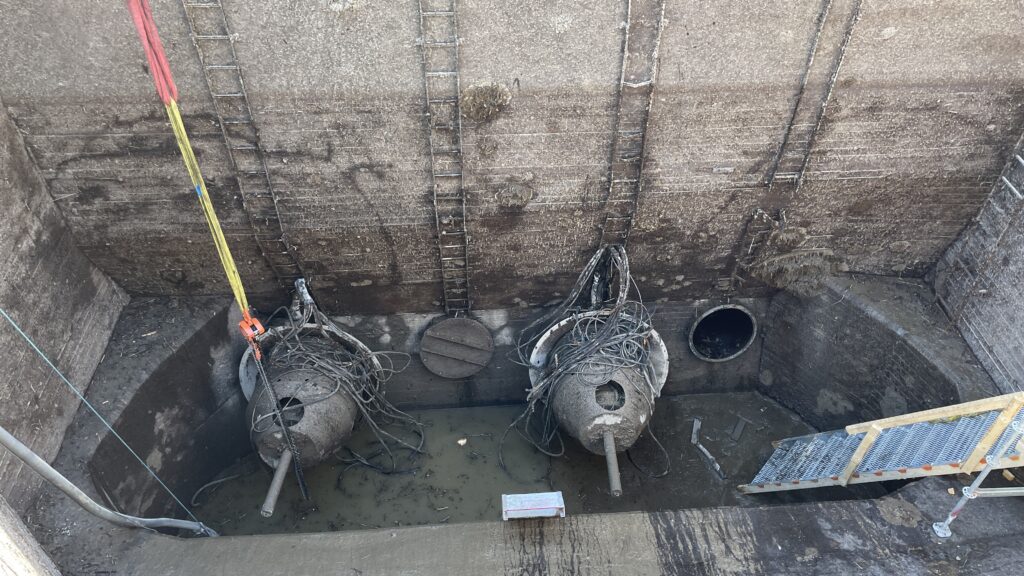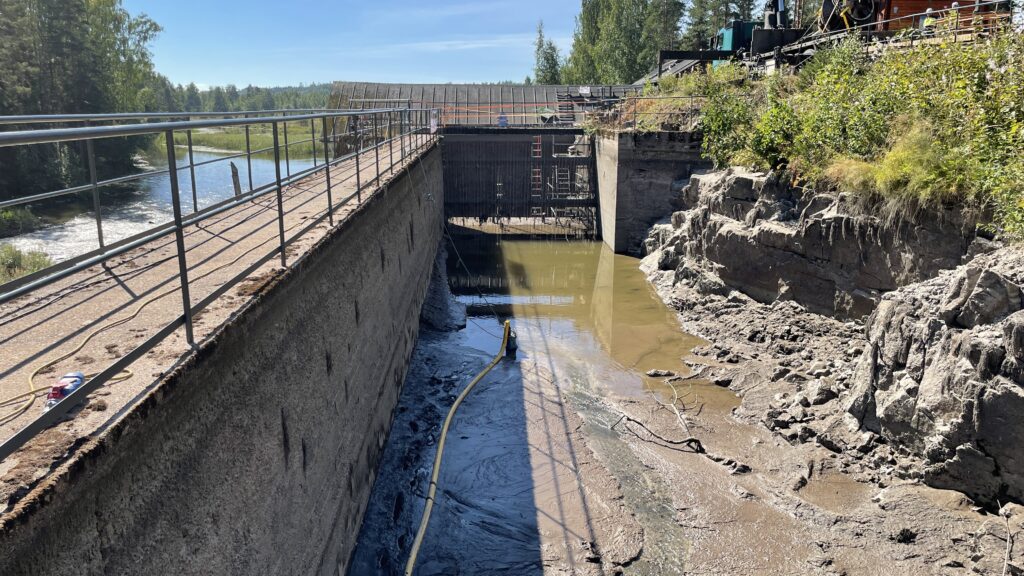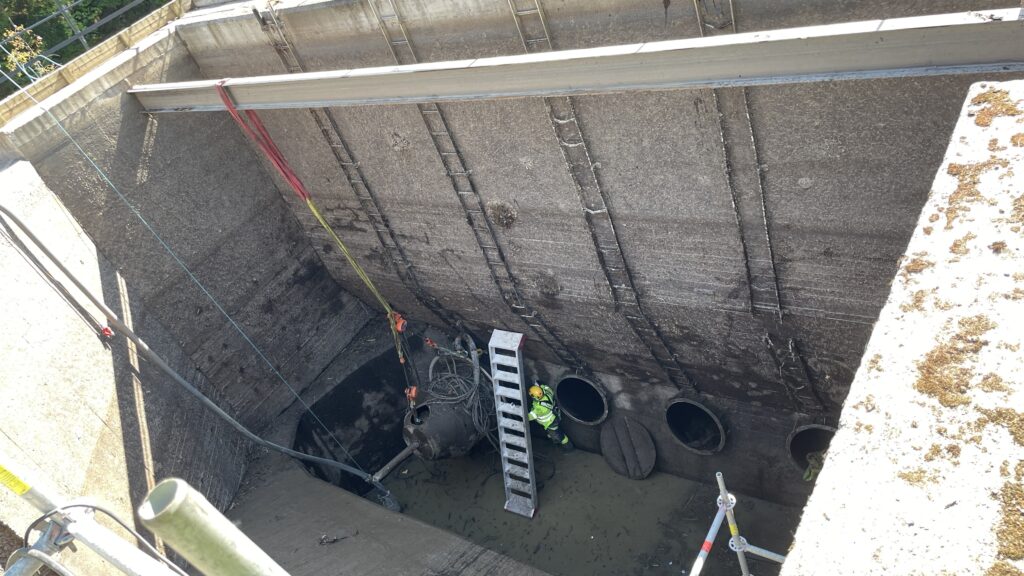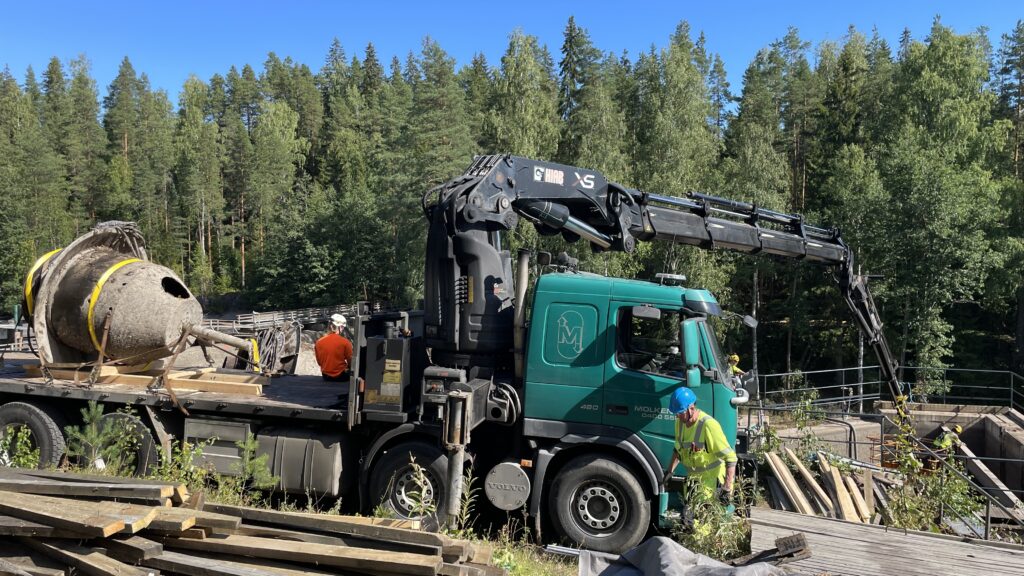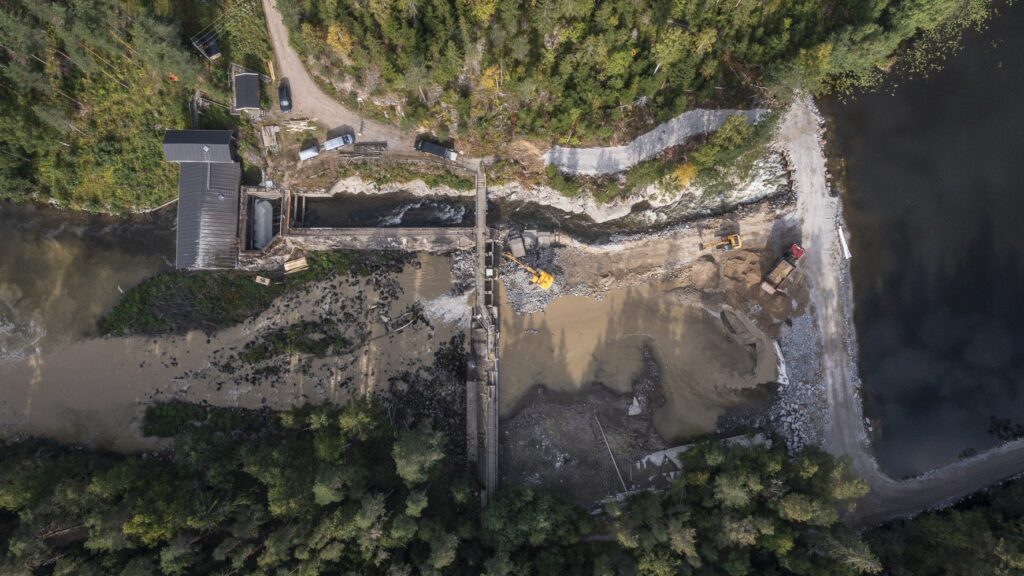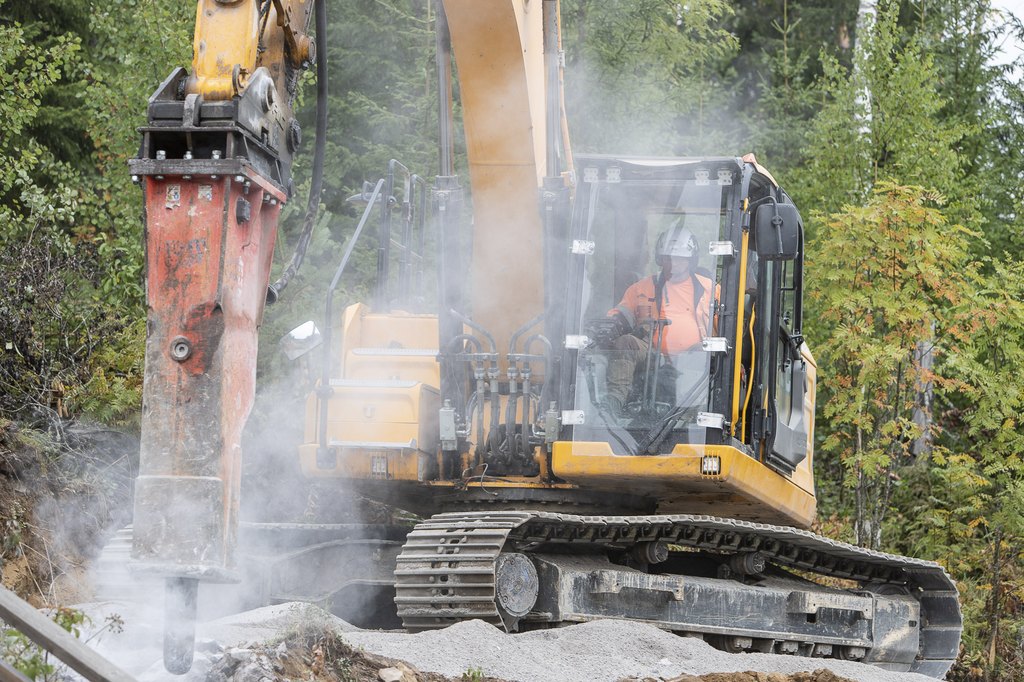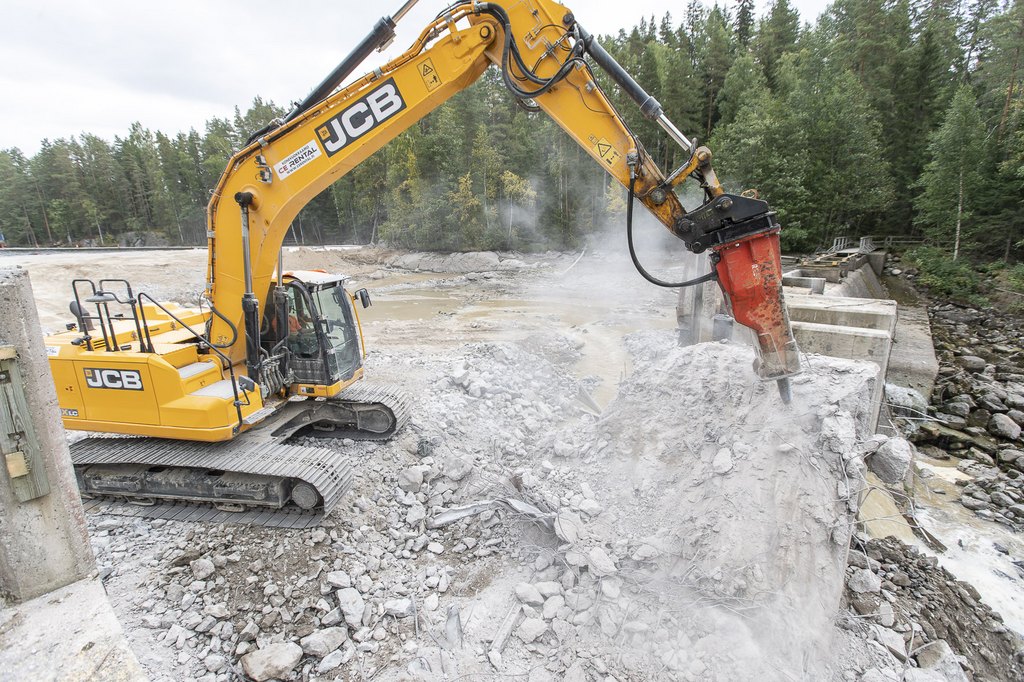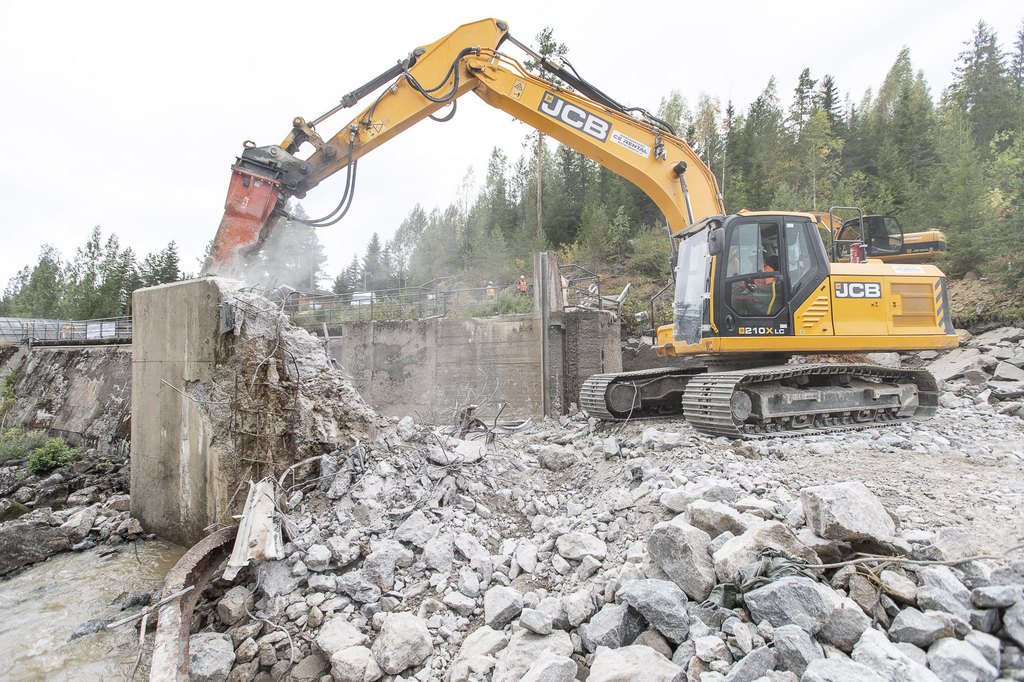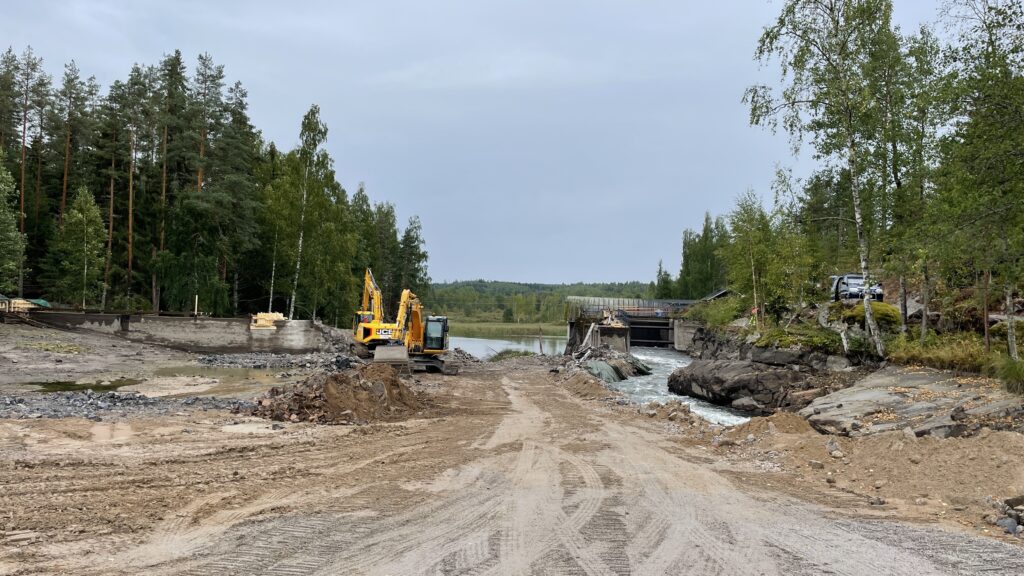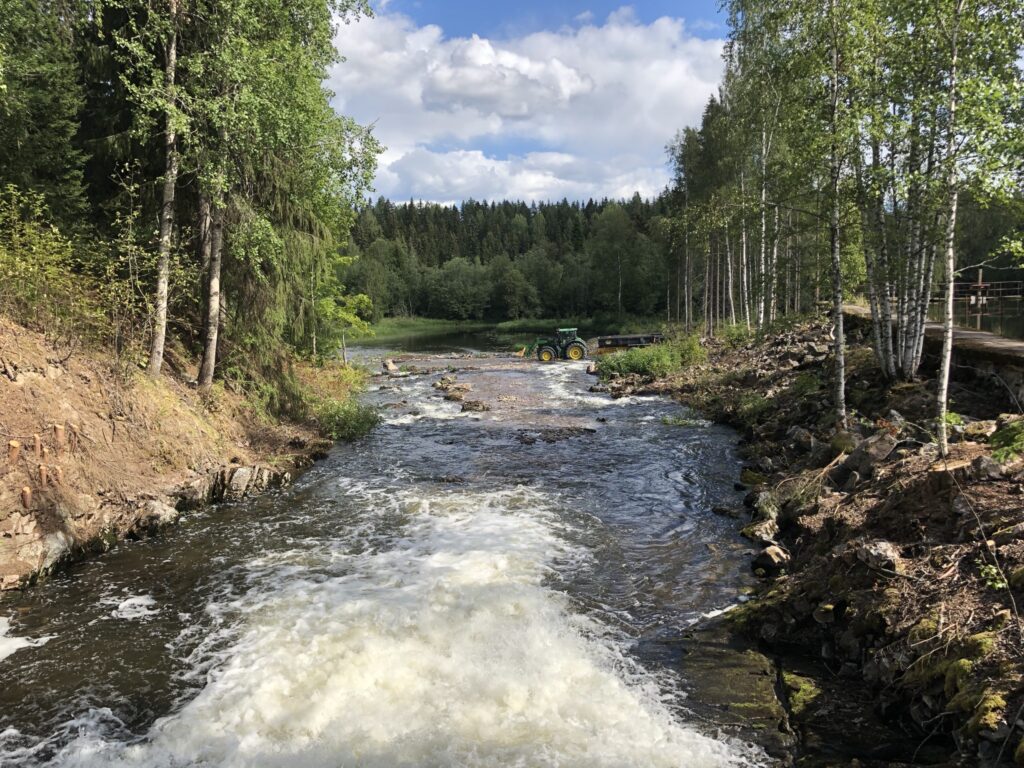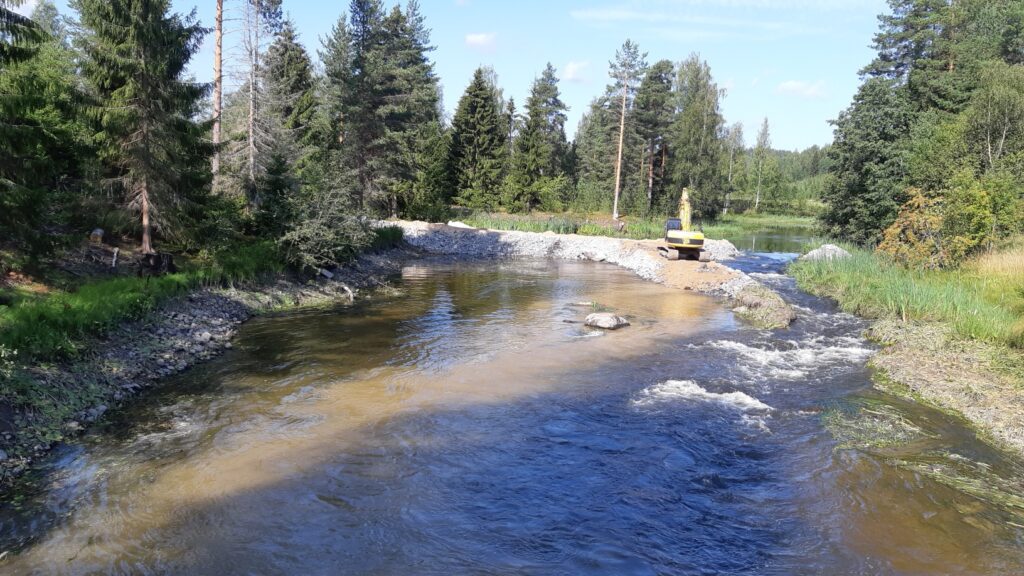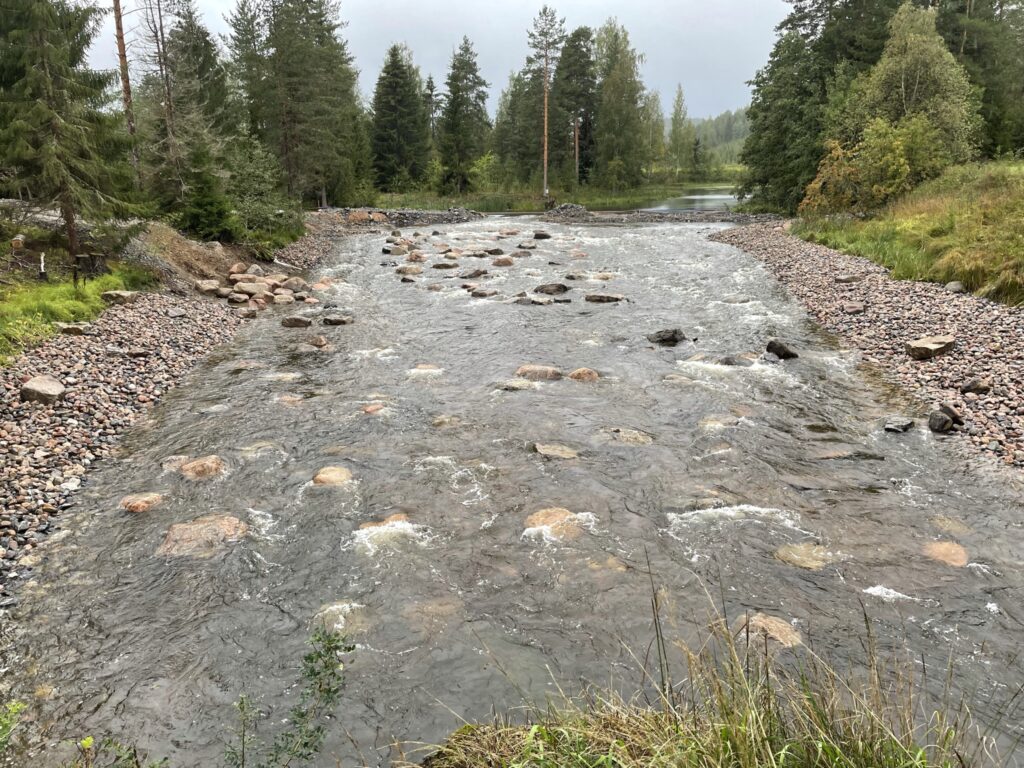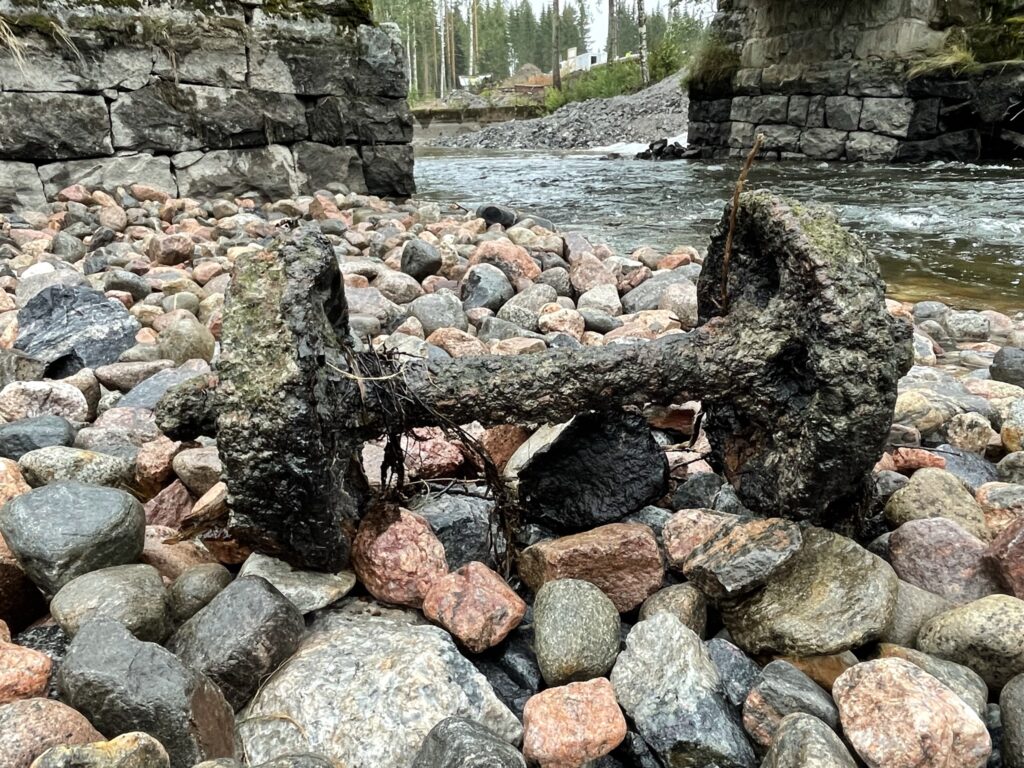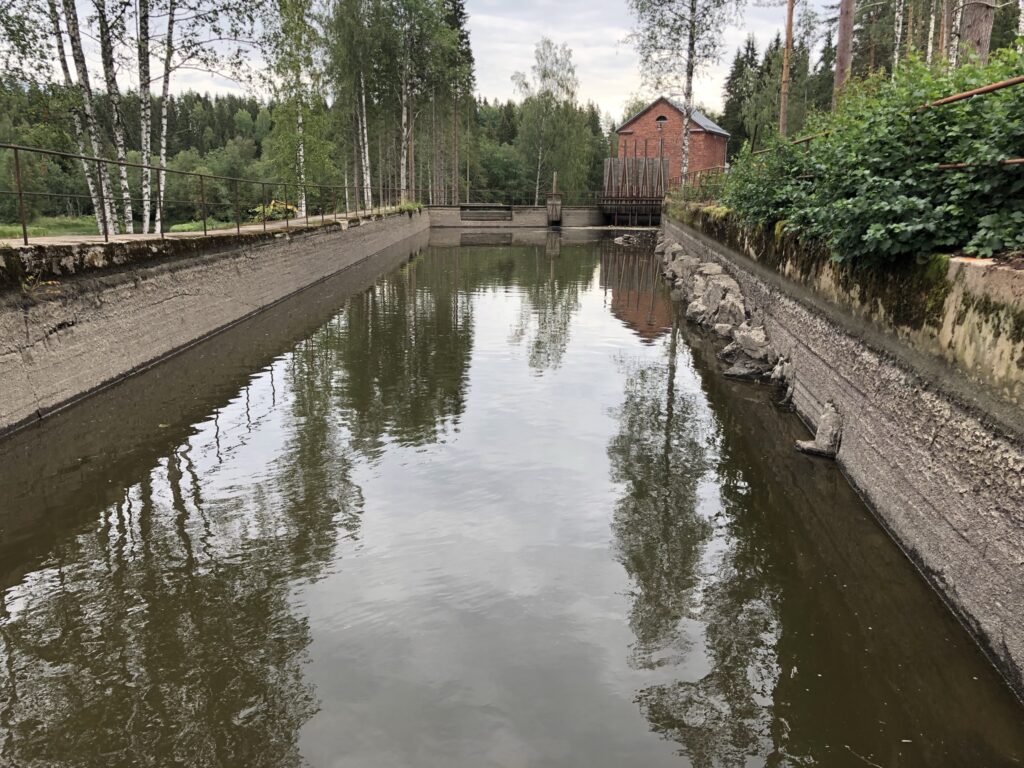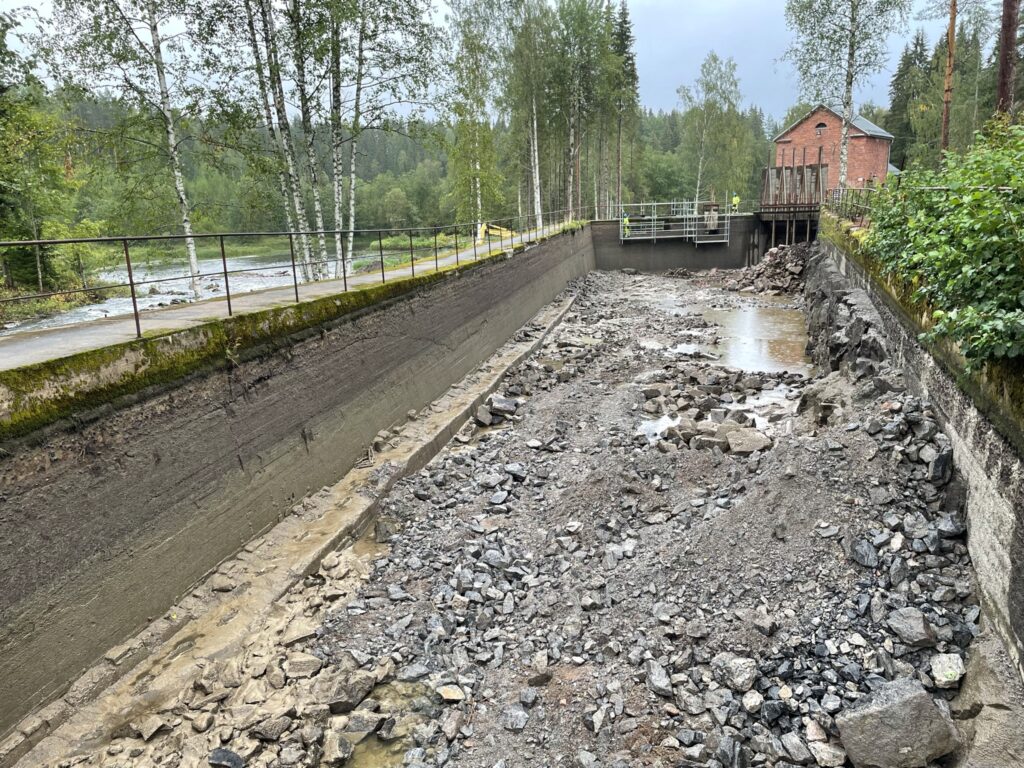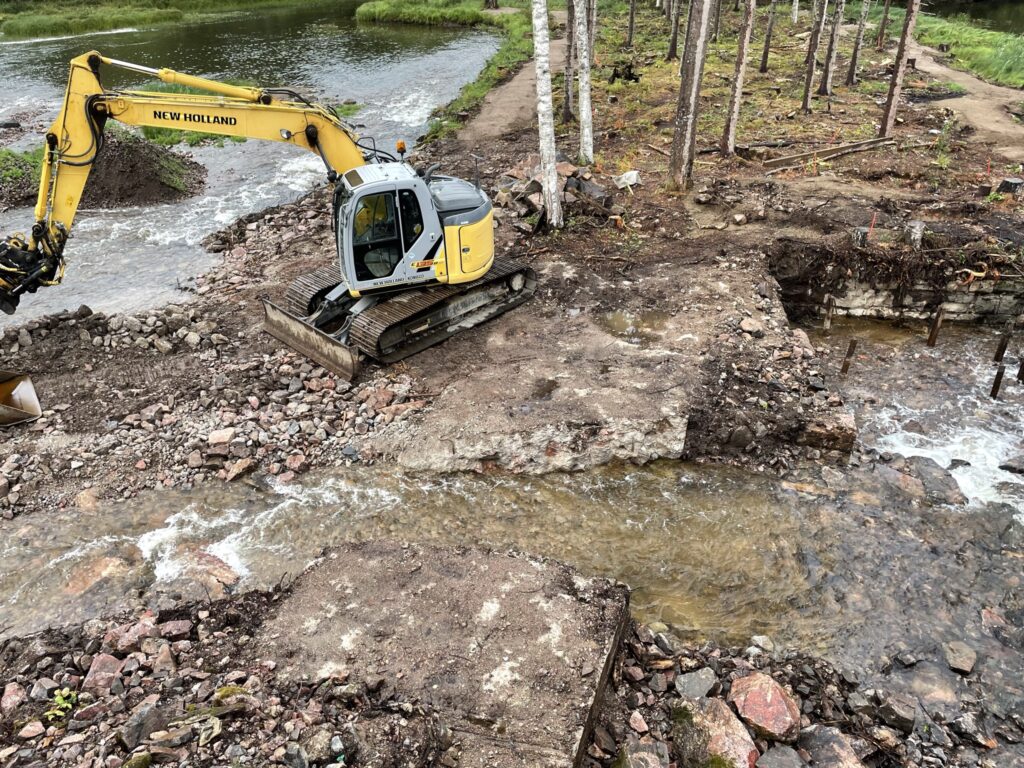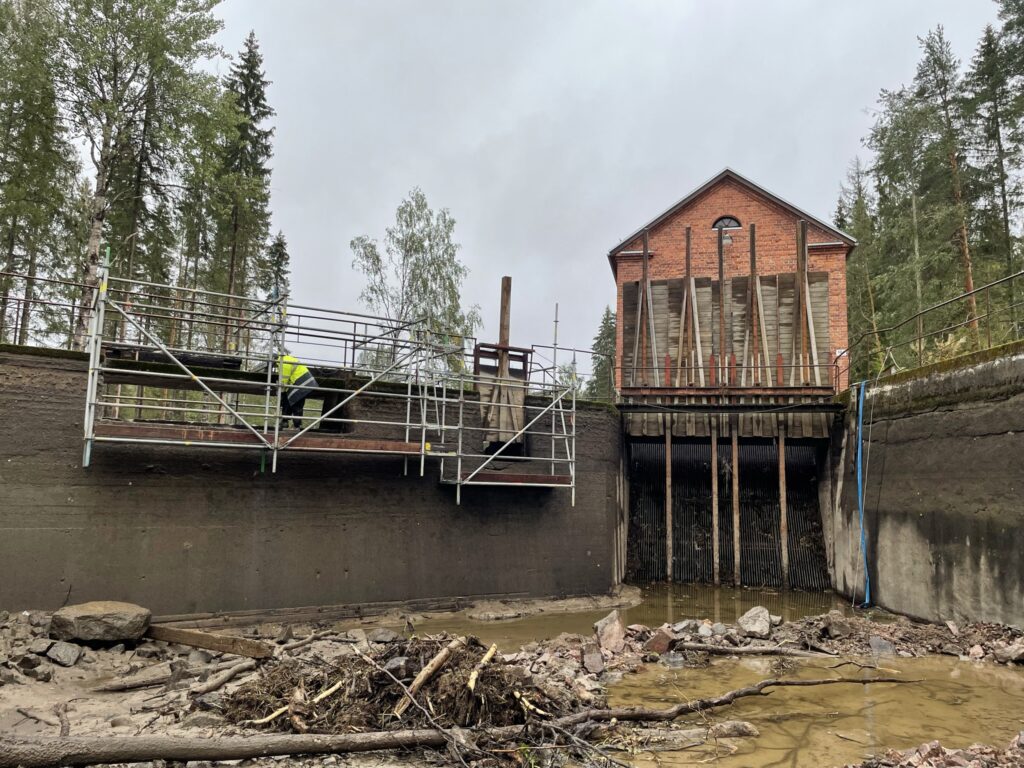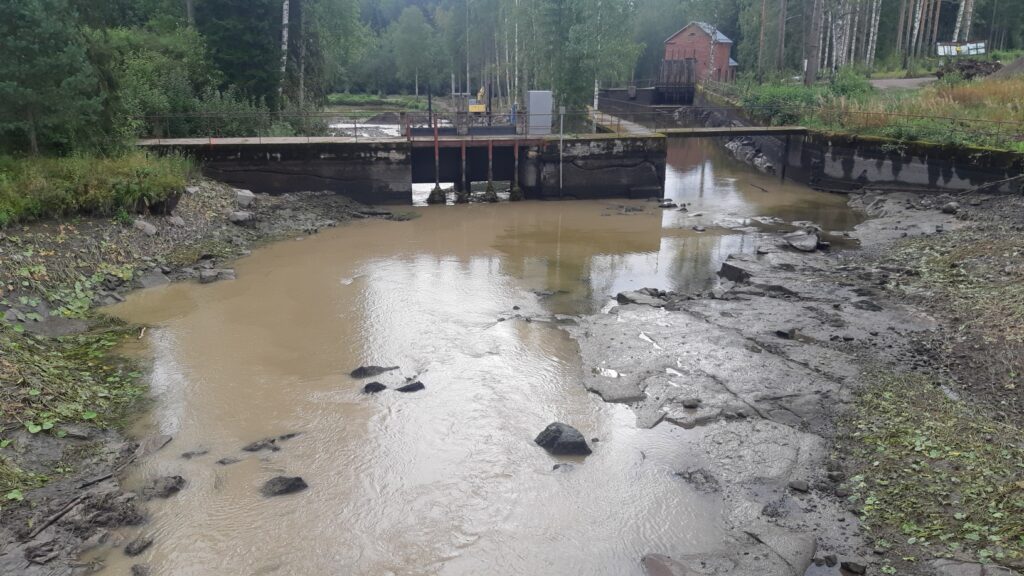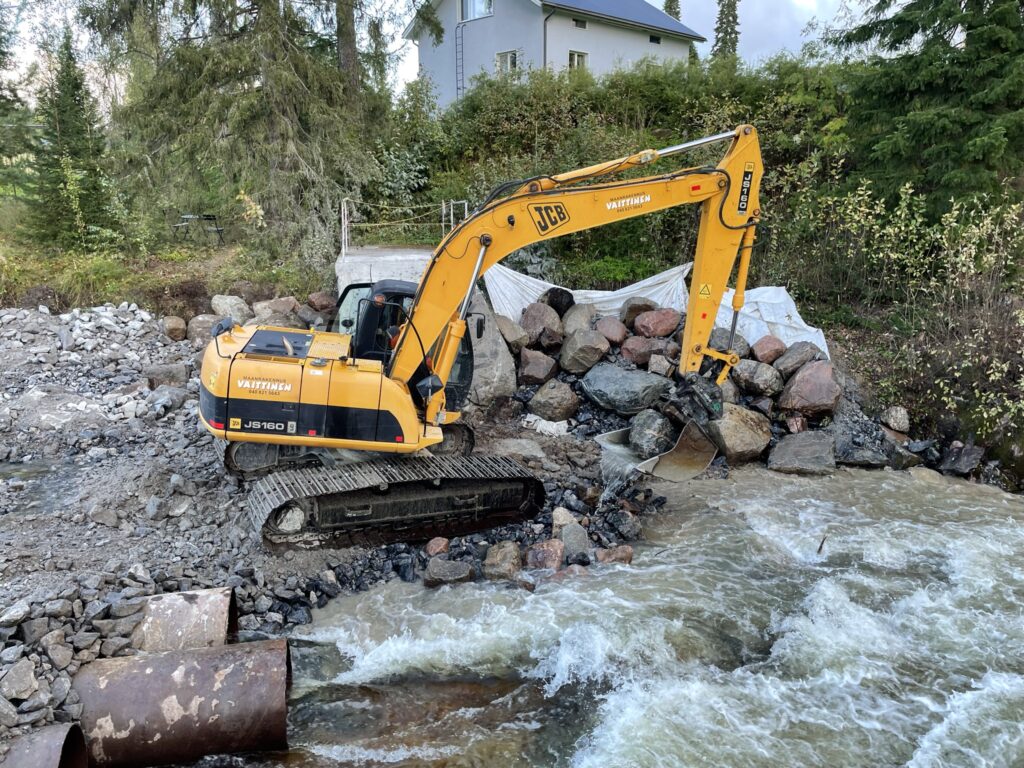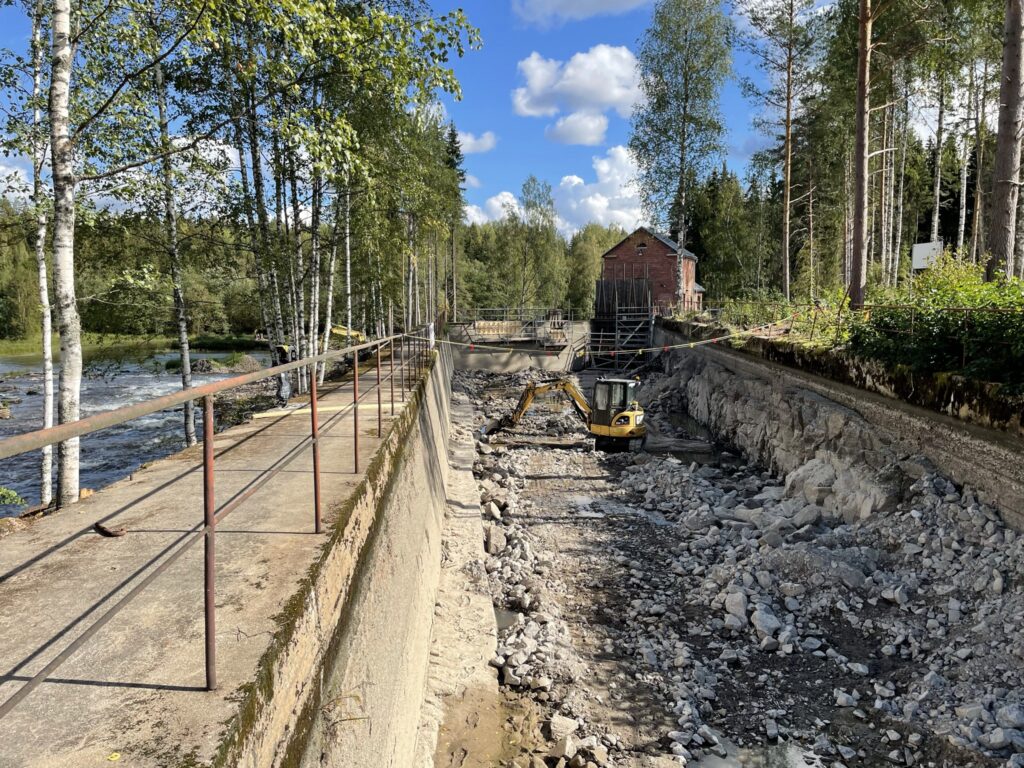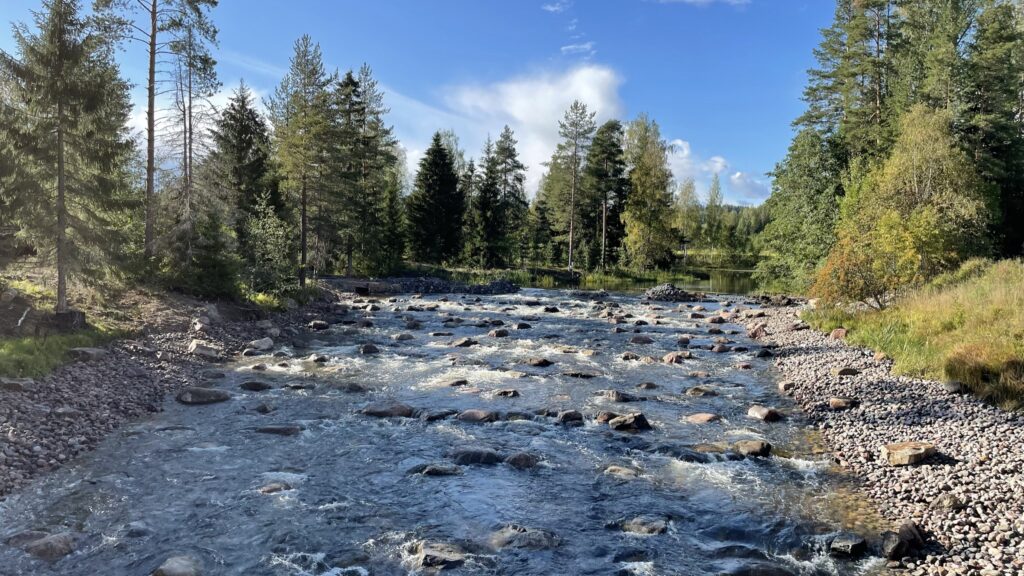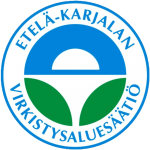There is an exceptionally abundant spring flood this spring, with a flow of about 30 m3/s, while a normal spring flood is 20 m3/s with and average flow less than 10 m3/s. The new Lahnasenkoski well survived the first normal spring 2023. This spring’s exceptional spring flood and the strong flow caused by it moved the aggregates deposited below the former dam location and the water now flows along the narrow channel.
Good luck in an accident – the salmon fry are safe
There was observed salmon fry only at the top of the rapids, where spawning nests have also been found, so this event has not caused significant harm to salmon spawning.
In the pictures below, on the left, the situation on April 2, 2024, and on the right and in the top picture, the water in the lower part of the rapids flows in the bed eroded by the flood on April 15, 2024.
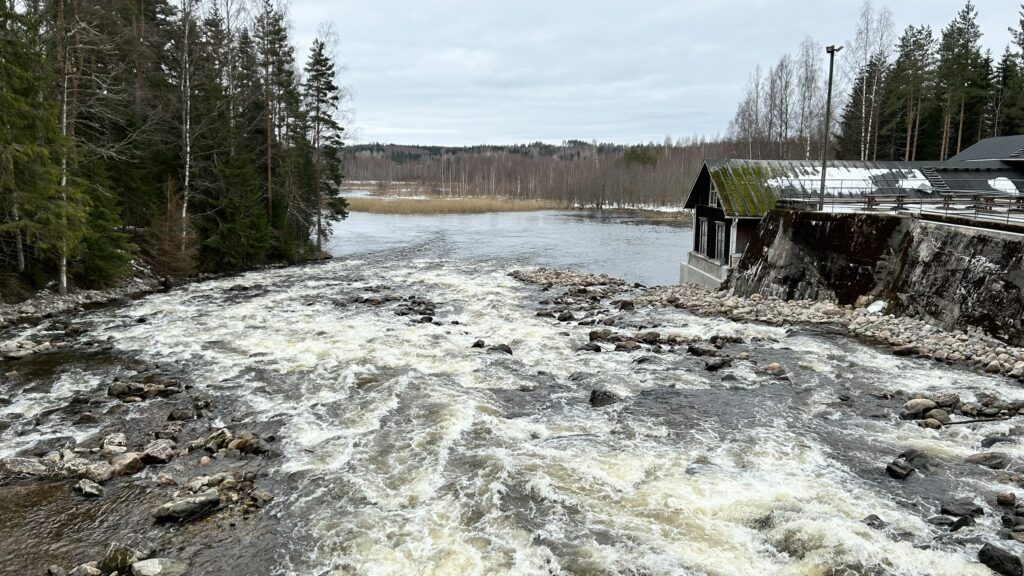
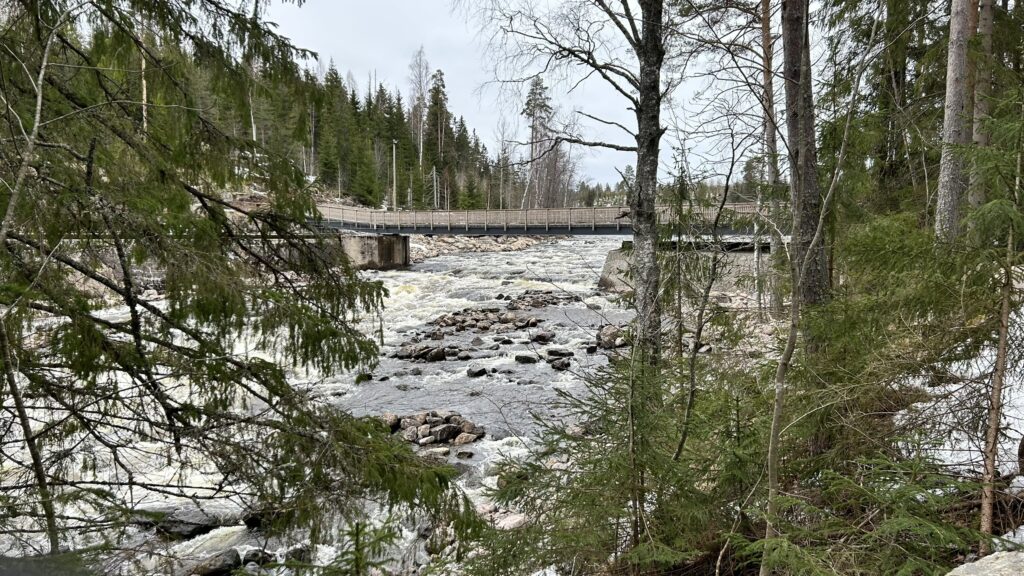
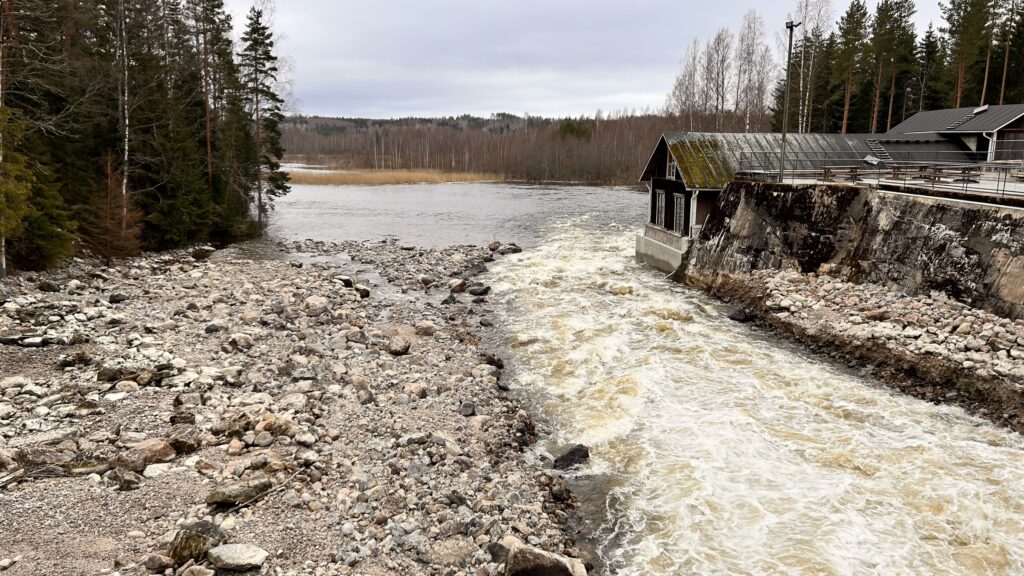
The bridge is fine, the boardwalk under water
The bridge crossing Lahnasenkoski was not damaged in the spring flood, so it is safe to walk on the bridge. The flood has raised the water level between Lahnasenkoski and Ritakoski on the path on the eastern riverside, which is not recommended until the water recedes. The best way to get to Lahnasenkoski rapids is from the west side.
The construction begins on Monday, April 22
The damage will be renovated by filling with big enough boulders, which even a strong current cannot carry away. The construction will be started quickly by the contractors who built the rapids. Because construction machinery traffic is past the campfire canopy, the canopy and the path to the bird tower have to be closed to hikers for safety reasons. You can go to the Lahnasenkoski bridge to follow the rapids and now also the progress of the construction site, but from the bridge you cannot go in the direction of the campfire canopy and the bird tower. The ban is valid until the restoration of the damage in the rapids is completed.



